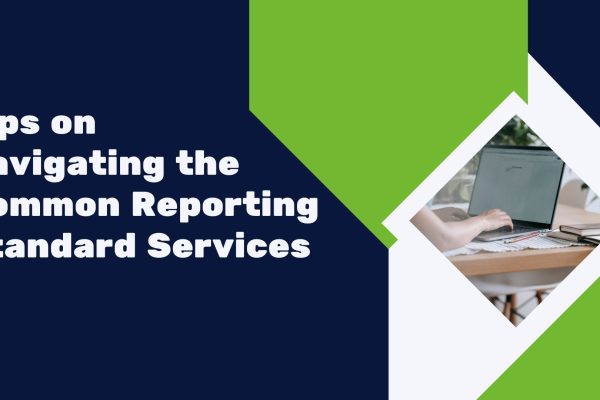Mastering Transfer Pricing: Essential Strategies for Small Business Owners
Mastering transfer pricing is crucial for small business owners who want to ensure their operations remain profitable and compliant, especially when expanding across borders. While transfer pricing might sound like a concept reserved for large corporations, it’s actually a vital consideration for businesses of all sizes. Understanding this complex process can significantly contribute to #BusinessGrowth and bolster your company’s #FinancialHealth. The right strategies can help small business owners navigate the challenges of pricing services and ensure a smooth path to growth.
What is Transfer Pricing?
Transfer pricing involves determining the prices for transactions between related entities within a company. These transactions could be the sale of goods, services, or intangible assets like intellectual property between subsidiaries located in different countries. Accurate transfer pricing ensures that a business charges fair and market-appropriate rates for these inter-company transactions, keeping tax authorities satisfied and avoiding costly disputes. It’s a strategy that is particularly important as small businesses expand beyond their local markets into international arenas. The importance of mastering this concept cannot be overstated when it comes to securing #BusinessGrowth and maintaining your #FinancialHealth.
Why Does Transfer Pricing Matter for Small Business Owners?
For small businesses, managing costs efficiently is critical. Transfer pricing can have a direct impact on tax liabilities, cash flow, and overall profitability. With global expansion, tax regulations can become increasingly complex, and the potential for double taxation arises if transfer pricing isn’t properly managed. For instance, if a small business in the United States sells a service to its subsidiary in Germany, both countries might want to tax the profit from that transaction. This is where understanding the nuances of transfer pricing can save significant amounts of money. By pricing services appropriately, small business owners can allocate income and expenses in a way that aligns with each jurisdiction’s regulations, minimizing the risks of double taxation. This strategy helps to ensure that your company pays its fair share of taxes—no more, no less—thus protecting your #FinancialHealth.

Strategy 1: Accurate Documentation is Key
One of the most critical steps in mastering transfer pricing is keeping thorough documentation. Small business owners must ensure they maintain detailed records of their transfer pricing practices, as this documentation is often the first thing tax authorities will request during an audit. Documentation should include the methods used to determine pricing, the rationale behind those methods, and proof that the prices align with market rates. Think of it as a safety net—without proper documentation, your business is vulnerable to scrutiny and potential penalties from tax authorities. For example, a company that documents its inter-company service transactions using the Comparable Uncontrolled Price (CUP) method can show that the prices charged between subsidiaries are comparable to those between unrelated parties. This transparency can greatly reduce the risk of an audit turning into a costly dispute, giving small business owners peace of mind. Accurate documentation ensures that small businesses remain in compliance with international regulations, setting the stage for sustainable #BusinessGrowth.
Strategy 2: Conduct Regular Benchmarking
Regular benchmarking is another essential strategy for small businesses looking to master transfer pricing. This involves comparing the prices used in inter-company transactions to those found in the open market. Benchmarking ensures that the transfer prices align with what independent entities would charge each other in a similar transaction. By doing so, businesses can demonstrate to tax authorities that their pricing is fair and in line with market conditions, reducing the risk of disputes. For example, if a U.S.-based business sells software licenses to its subsidiary in Canada, it should compare the price of those licenses with what other companies are charging for similar software. This approach not only helps small businesses to stay compliant but also provides valuable insights into market trends, helping them remain competitive in their pricing strategies. Effective benchmarking supports #BusinessGrowth by keeping pricing strategies in line with market realities, ensuring profitability while maintaining compliance.
Strategy 3: Leverage the Expertise of Transfer Pricing Professionals
Transfer pricing regulations can be difficult to navigate, especially for small business owners who may not have a dedicated in-house finance team. Partnering with transfer pricing professionals can be a game-changer. These experts bring a wealth of knowledge about local and international regulations, helping to design a pricing strategy that’s tailored to your business’s needs. An experienced transfer pricing consultant can help small business owners determine the best pricing models, whether it’s the Resale Price Method, Cost Plus Method, or Transactional Net Margin Method (TNMM). Additionally, they can guide the documentation process and assist with benchmarking studies, ensuring that every aspect of transfer pricing is meticulously handled. For example, a small business that hires a transfer pricing advisor can gain insights into how to structure its operations in a way that minimizes tax risks while optimizing profit allocation. This partnership can save time, reduce stress, and allow business owners to focus on core operations, fueling #Entrepreneurship and #BusinessGrowth.
Strategy 4: Stay Proactive with Compliance Updates
Tax regulations are constantly evolving, and what was compliant last year may not hold up today. Small businesses need to stay updated with the latest changes in transfer pricing regulations. A proactive approach to compliance can prevent unexpected tax liabilities and help small businesses avoid costly penalties. For instance, many countries have recently adopted stricter documentation requirements as part of the OECD’s Base Erosion and Profit Shifting (BEPS) initiatives. A small business that proactively adjusts its transfer pricing strategy in line with these changes is more likely to maintain a positive relationship with tax authorities and avoid legal entanglements. Small business owners can stay informed by attending industry seminars, subscribing to tax updates, or working with transfer pricing experts who can provide timely guidance. Staying ahead of regulatory changes ensures that your business remains compliant and well-positioned for sustainable #BusinessGrowth.

The Role of Technology in Simplifying Transfer Pricing
Technology can be a powerful ally in mastering transfer pricing, offering software solutions that help small businesses manage their inter-company transactions efficiently. Tools like transfer pricing software can automate benchmarking, streamline documentation, and provide real-time insights into transaction compliance. These solutions are particularly valuable for small businesses with limited resources, as they can reduce the time and effort spent on manual data collection and analysis. For instance, a small business using transfer pricing software can automate the documentation process, ensuring that all necessary records are stored in one place and easily accessible during an audit. By embracing technology, small business owners can focus more on #Entrepreneurship and strategic growth, knowing that their transfer pricing is in good hands.
Real-Life Success Story
Consider the example of a small U.K.-based e-commerce business that expanded into the U.S. market. Initially, they struggled with setting the right prices for their inter-company sales, leading to multiple inquiries from tax authorities. After partnering with a transfer pricing consultant and implementing a regular benchmarking process, they were able to align their pricing with market rates and document their transactions accurately. This proactive approach not only helped them avoid further tax disputes but also resulted in significant cost savings, which they reinvested in their business expansion. Today, they have a stronger presence in the U.S. market, with a streamlined pricing strategy that supports their #BusinessGrowth.
Mastering transfer pricing is not just about meeting regulatory requirements—it’s about building a strong foundation for #FinancialHealth and sustainable growth. By understanding the intricacies of transfer pricing, keeping thorough documentation, conducting regular benchmarking, and leveraging expert guidance, small businesses can optimize their operations and thrive in the global market. Remember, whether you’re just starting your expansion journey or already operating across borders, these strategies can help ensure that your pricing is fair, compliant, and conducive to long-term success. In the competitive world of #Entrepreneurship, mastering transfer pricing is a strategic advantage that can set your business apart.










